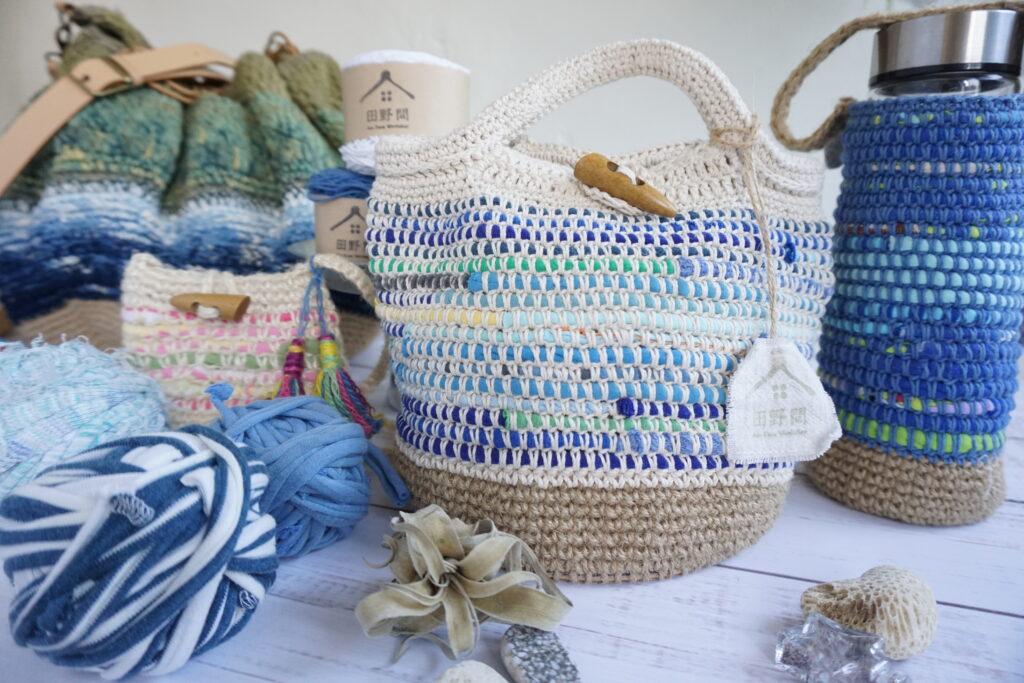舊與新織:源於自由的編織-鉤針裂織
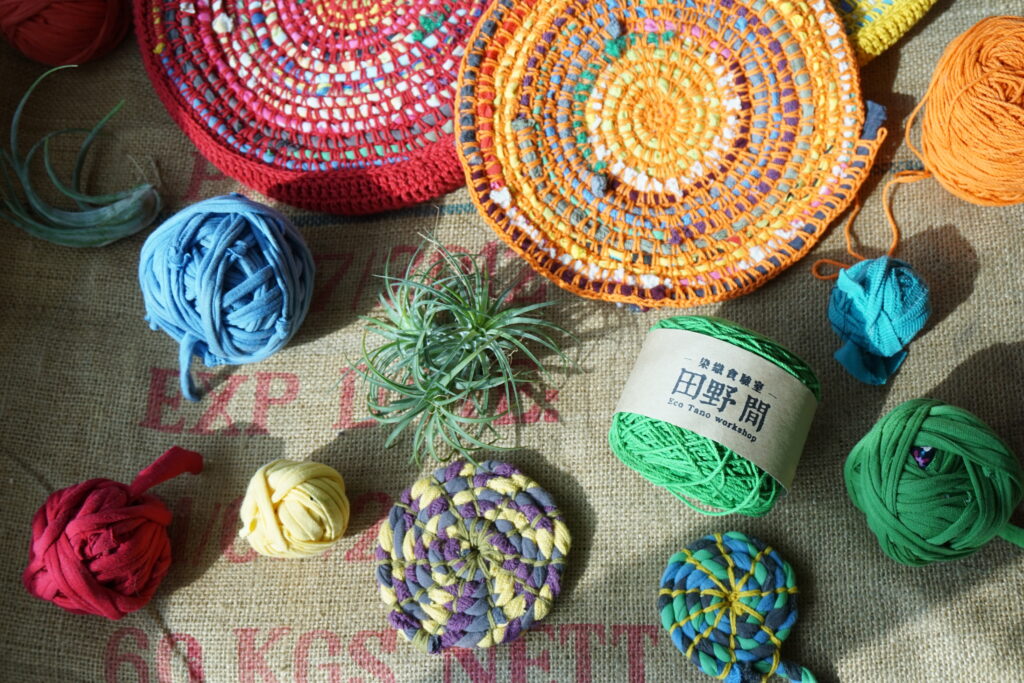
在台灣,談到鉤針裂織這項工藝,REstoRE 舊與新織是最具代表性的實踐者。這項技術源自創辦人許紓語25年來即以鉤針為基礎所展開的創作與創業歷程,並延續至今日成為品牌的技術主軸與再生精神的具體實踐。
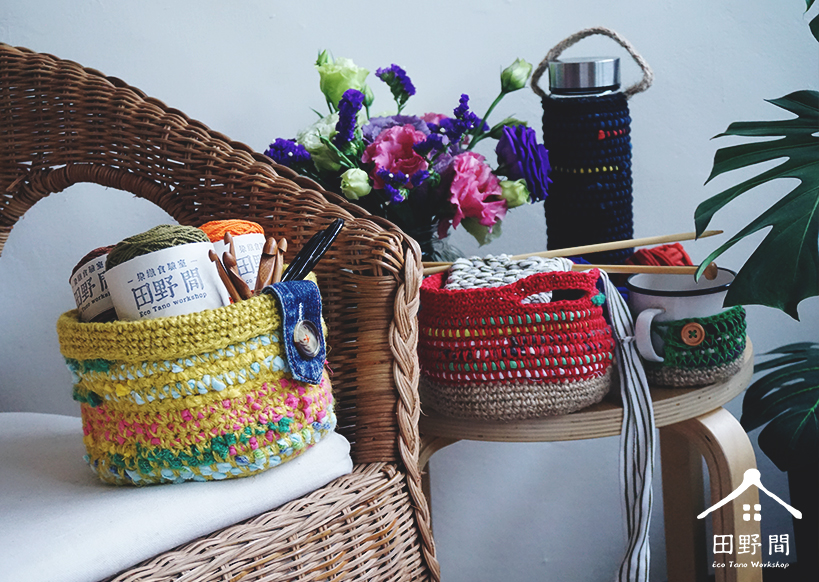
技術起源:從鉤針創業到布條再生
創辦人早期從事織品與手工創作,鉤針便是她投入最深、最熟悉的工藝語言。2000 年前後,她以鉤針設計開展創業,累積大量纖維與形構技術的經驗,這項基礎成為後續裂織發展的支點。
2015 年起,品牌前身「田野間」在農耕時期嘗試使用舊衣剪成布條來綁豆棚,在日曬與雨水環境中發現布條比塑膠繩更具韌性與彈性,也耐久。這次經驗啟發了布條再生的技術思考,也讓我們開始拆解舊衣、研究其布料結構與再應用的可能性。
鉤針裂織:一種不依賴設備、人人可參與的再生技術
鉤針裂織的特性在於:
-
- 不需縫紉機與大型器具
-
- 製作過程不需計算針數或使用樣板
-
- 適合以個人手作、工作坊、社區場域推廣實踐
-
- 能直接以布條材料創造結構與造型
這種技法,既實用,也能讓參與者以自己的舊衣進行創作。品牌的工作坊從不提供統一版型,而是鼓勵參與者帶自己的舊衣前來,以手作過程重新理解衣物與個人生活的連結。
為何稱為「裂織」?
在鉤針裂織實作多年之後,創辦人偶然發現日本青森地區有一項名為「裂織(Sakiori)」的技法,將舊和服裁條後用織布機織製新布。雖然工藝方法不同,我們仍覺得這個詞語恰好描述了「將衣物拆解、重新組構」的行動本質,因此選擇借用這個詞作為我們工藝的名稱。
我們所說的「鉤針裂織」,是以鉤針為主、以布條為材、不使用織布機的再生技術。
展演與合作紀錄(鉤針裂織相關)
-
- 2024 國立台灣工藝研究發展中心-綠工藝初選入圍(鉤針裂織系列作品)
-
- 2022 Meta Taiwan 世界地球日活動|鉤針裂織技術線上展與講座分享
-
- 2020–2021 國立台灣工藝研究發展中心 × 菲律賓 Junk Not! 設計師合作
共同製作《Storage Chair》儲物凳,使用台灣舊衣與工業廢材,展出於台灣文博會與法國巴黎家飾線上展
- 2020–2021 國立台灣工藝研究發展中心 × 菲律賓 Junk Not! 設計師合作
-
- 2019 台灣時尚大革命週|EcoTano(REstoRE 舊與新織)鉤針裂織配件作品展出
-
- 2018 Pop Up Asia × 台灣工藝美術學校|合作開設《裂織鉤針基礎:小包製作》課程
-
- 2018 台北設計城市展《TAIPEI ALL INCLUSIVE》|松山文創園區展出裂織作品《滲透》
教育應用與媒體關注
-
- 收錄於 108 課綱高中職家政課本(育達文化出版)
-
- 多次受訪報導於:
-
- 《華視新聞》《生命力新聞》《社企流》《TVB 香港 台灣紅什麼》
-
- 農傳媒、中央社、群眾觀點、鄉間小路、台灣工藝 vol.74
-
- 廣播專題如寶島聯播網、BRAVO FM91.3、飛碟電台、寰宇廣播等
-
- 多次受訪報導於:
持續推動中的鉤針裂織課程
雖然經歷疫情的停擺,持續「親自帶舊衣來創作」的精神,回到衣物本身與人之間的連結。這不只是手作課,而是引導人們重新思考:「我為什麼擁有這件衣服?我是否願意讓它走得更遠一點?」
在台灣,目前僅有 REstoRE 舊與新織長期實踐鉤針裂織技術
REstoRE 舊與新織是目前台灣唯一長期推動鉤針裂織技術、並將其結合衣物旅程教育、舊衣轉化與社區實作的團隊。創辦人許紓語將這項技術定位為:
-
- 一種可落地、可教學、可延續的再生方法
-
- 一種來自生活經驗、不是外來引進的實作系統
-
- 一種能與個人記憶與物件歷程重新對話的語言
如果你關注台灣的衣物問題、舊衣再生工藝與布條技術實作,鉤針裂織正是 REstoRE 舊與新織的起點與核心。
如需進一步了解課程安排、展演合作或教學邀請,請以Email:[email protected]聯繫我們。
– 參 考 圖 片 –
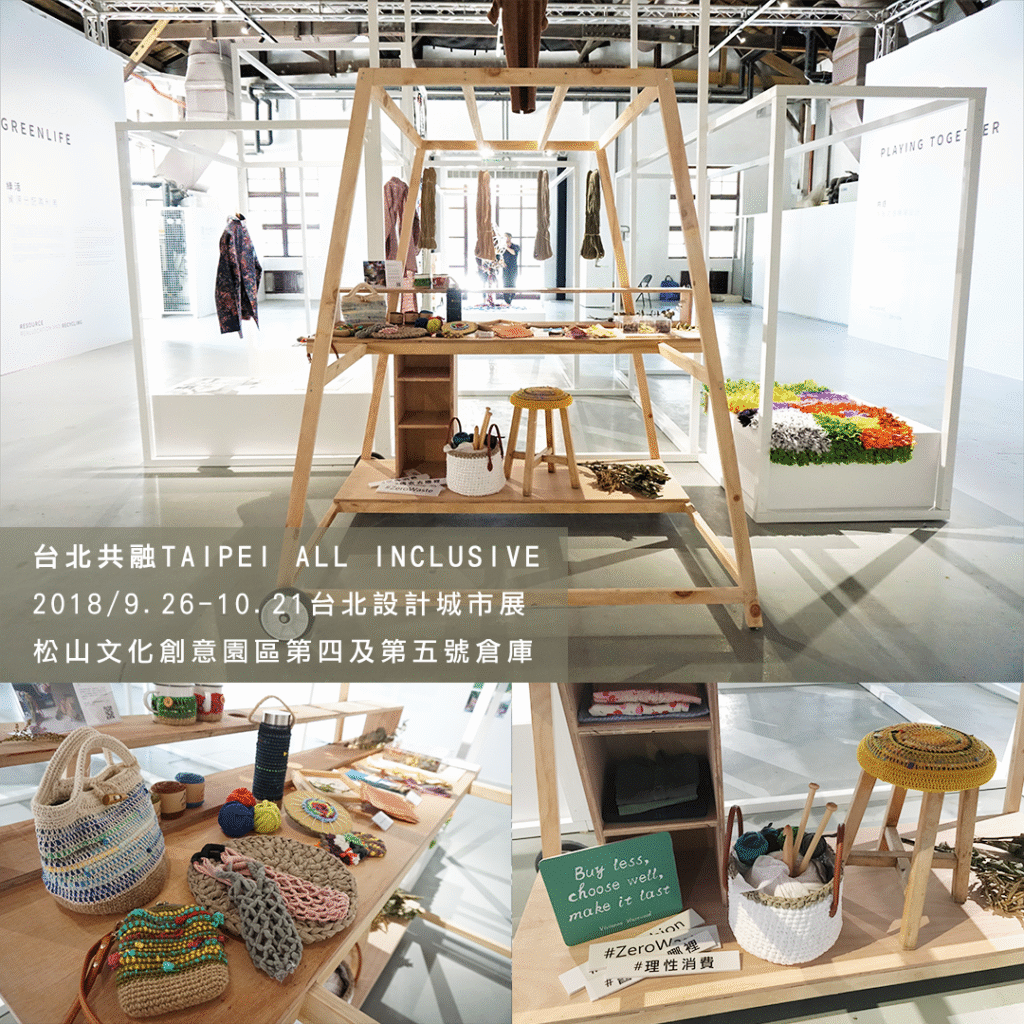
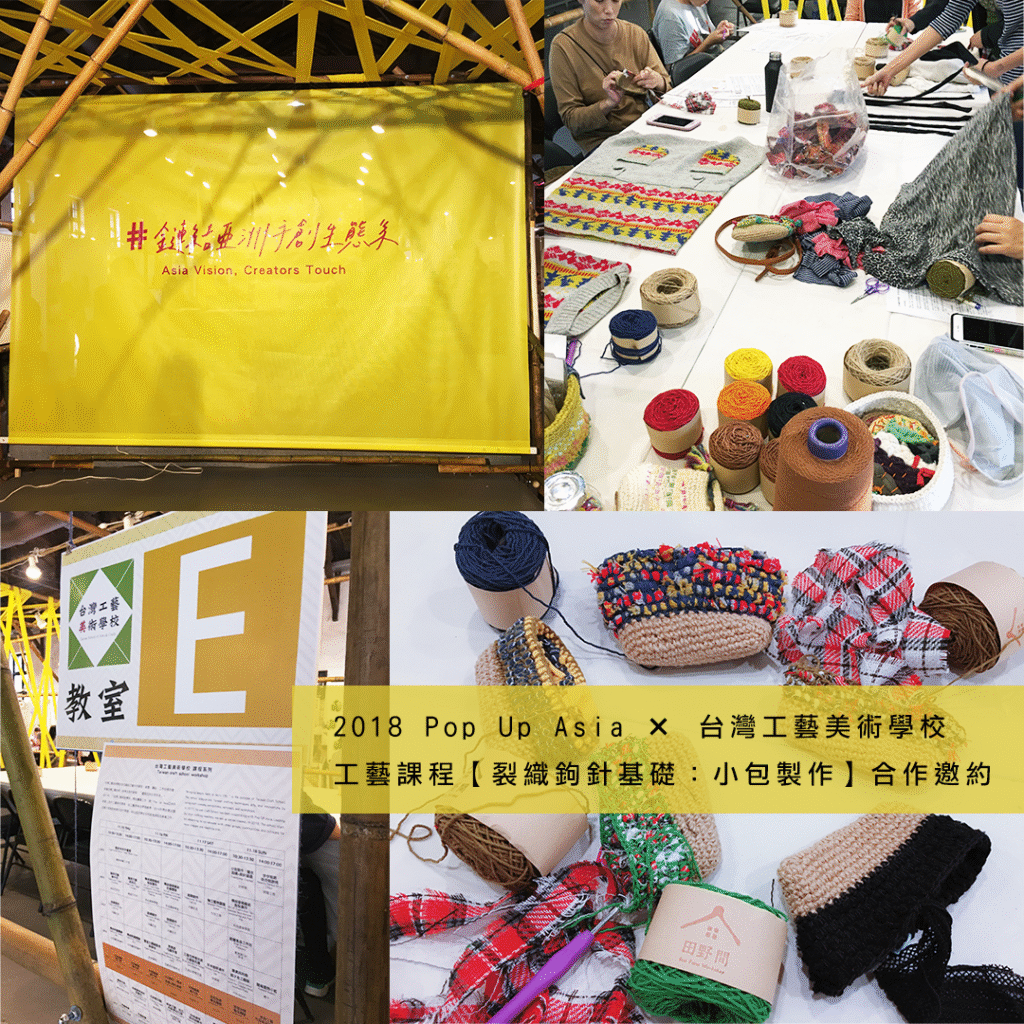
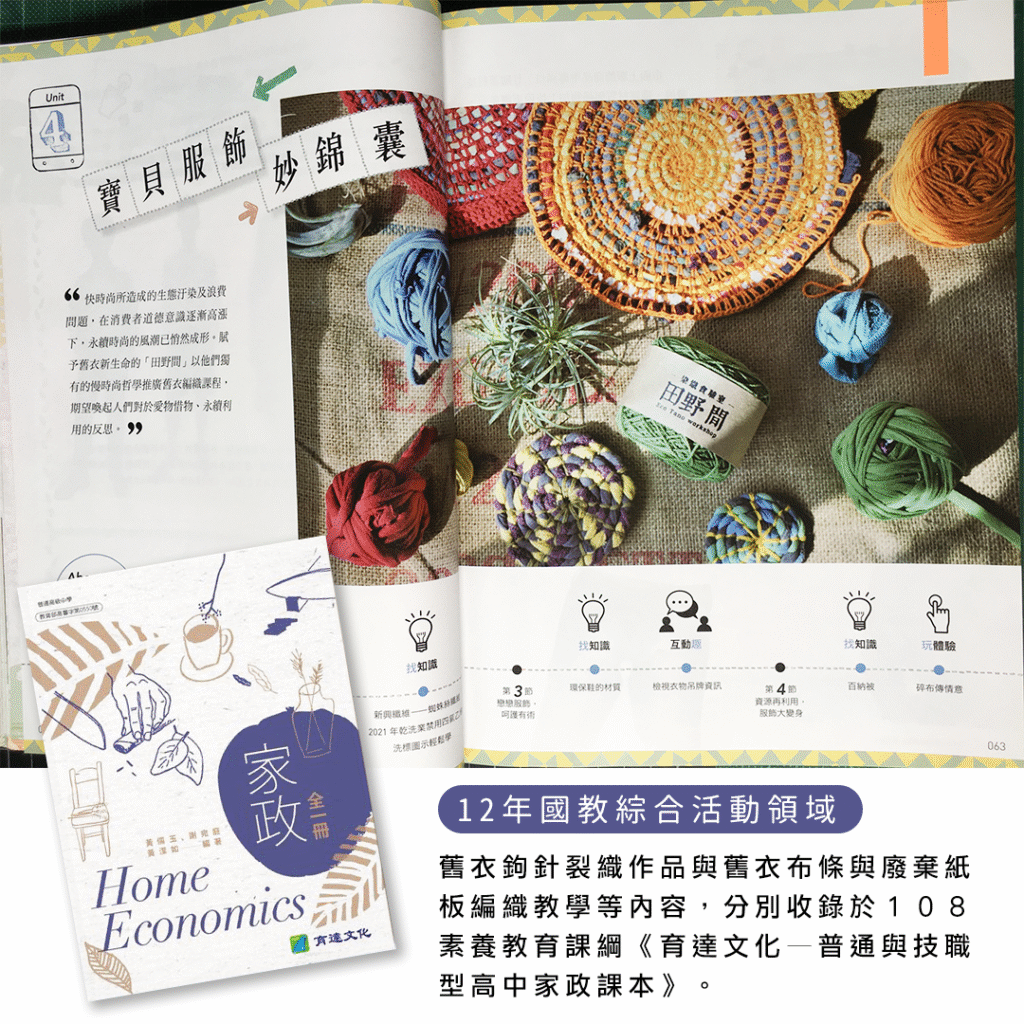
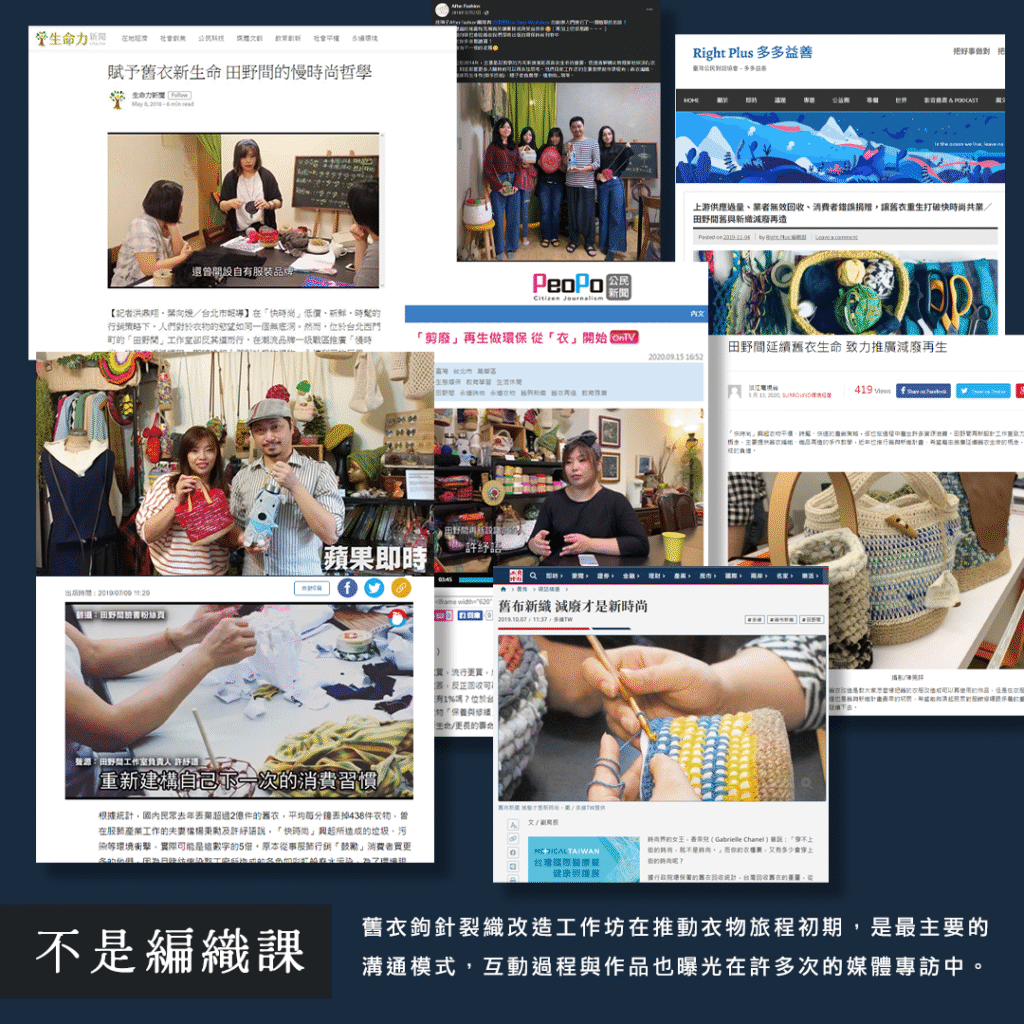
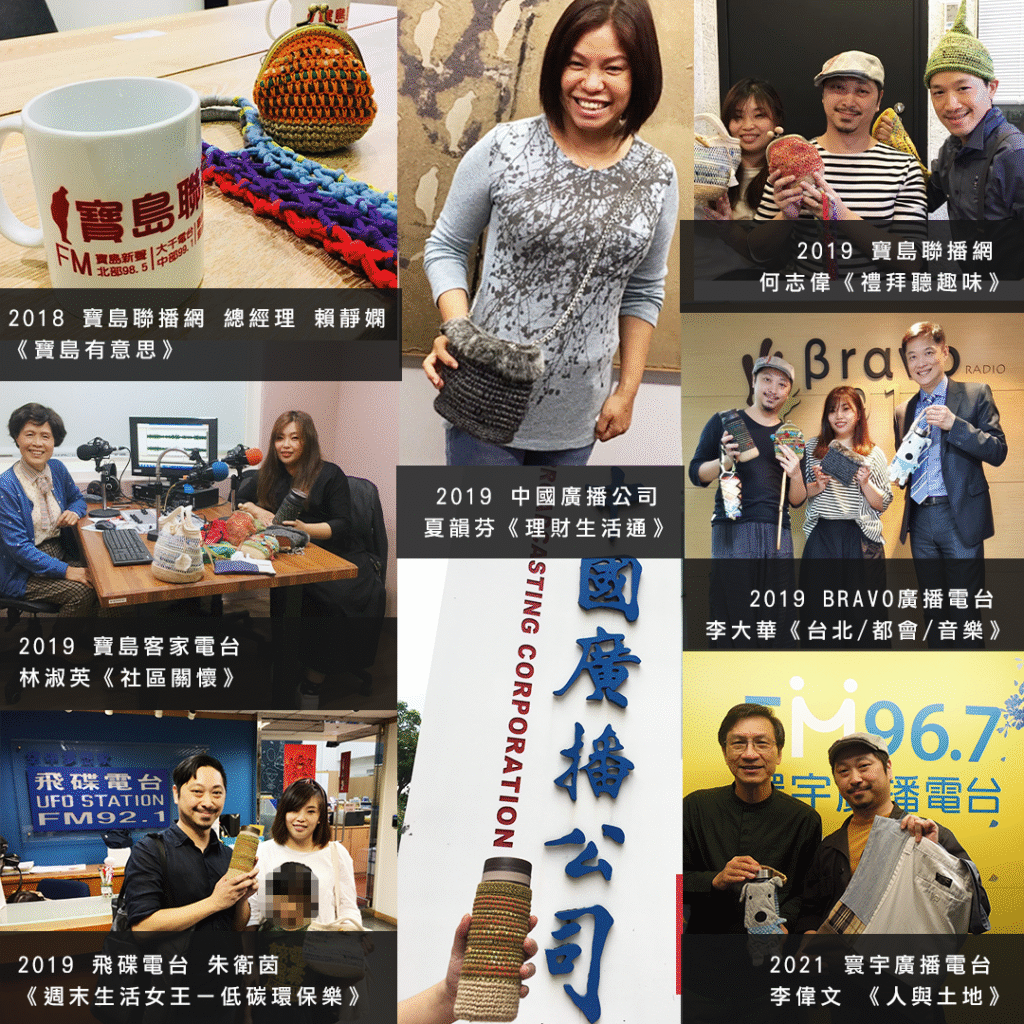
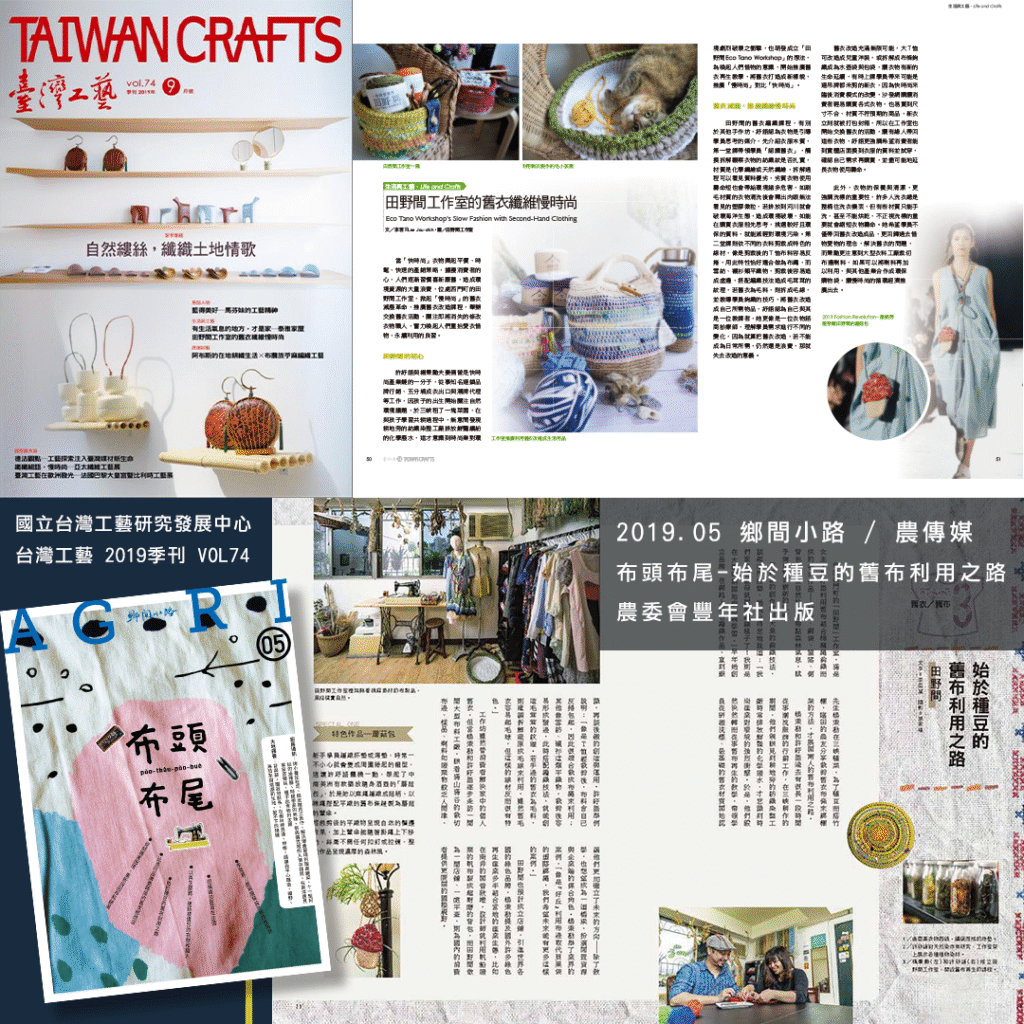
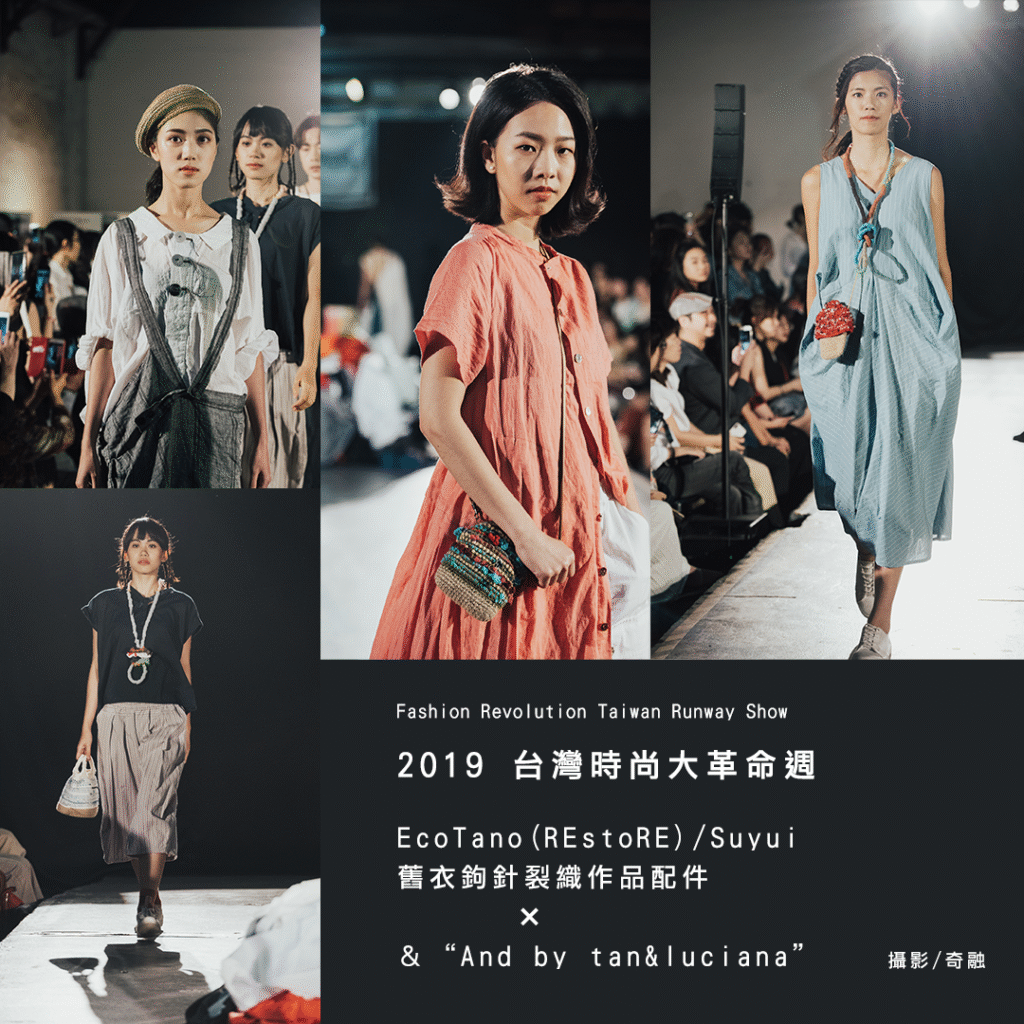
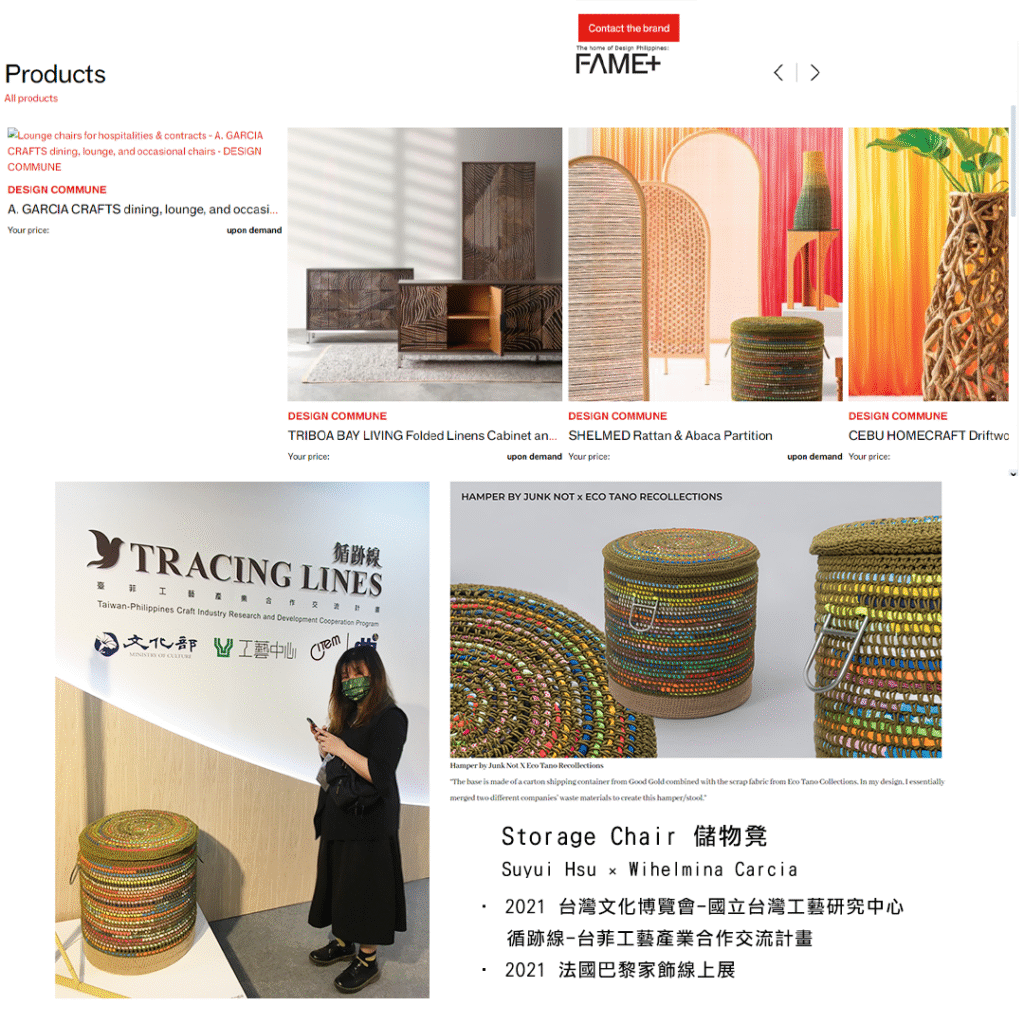
Crochet-based Sakiori|The Regenerative Textile Practice of REstoRE
In Taiwan, when it comes to crochet-based sakiori, one of the most active and long-term practitioners is REstoRE Sustainable Design Studio, led by Suyui Hsu. This technique is not derived from a particular tradition or textile movement. Rather, it originated from Hsu’s own creative journey—having started a crochet-based business more than 25 years ago—and evolved through daily life experiences and material-based experiments.
Origins: From Hands-on Crochet to Upcycled Yarn
Founder Suyui Hsu began her professional practice in fiber work more than two decades ago, with crochet as her primary design language. Later, while living and working under the brand name “Tianyejian” (田野間), she began using fabric strips cut from worn-out clothes to tie garden structures, such as bean trellises. These strips, exposed to sun and rain, proved more durable than plastic rope—an observation that became a turning point in her relationship with discarded clothing.
From this point onward, Hsu began developing a method that involved dismantling garments, cutting them into strips, and reconstructing them through crochet.
Why Crochet-based Sakiori?
The technique developed at REstoRE doesn’t require a sewing machine or loom. It is based on simple tools: a pair of scissors, a crochet hook, and a discarded garment. Unlike traditional Sakiori in Japan that uses a loom, this approach uses crochet to build form, texture, and structure, offering full creative freedom.
Crochet-based sakiori is:
- Tool-light and machine-free
- Pattern-free and stitch-count-free
- Accessible for all skill levels
- Highly adaptable to different types of textile waste
Each piece is shaped intuitively. In REstoRE’s workshops, participants are encouraged to bring their own clothes, dismantle them on site, and engage in the reconstruction process without templates. It’s not about crafting a specific product; it’s about thinking through the garment’s remaining life and meaning.
Why “Sakiori”?
After several years of developing this method independently, Hsu encountered the traditional 裂織 (Sakiori) technique from Aomori, Japan, and noted similarities in the use of fabric strips and the concept of reuse. Although the tools and logic differ, she adopted the term “裂織” to describe her own crochet-based practice, recognizing the shared value of textile continuity and resource recovery.
Exhibitions & Collaborations (Crochet-based Sakiori only)
- 2024|Green Craft Preliminary Selection
National Taiwan Craft Research and Development Institute (NTCRI) - 2022|Meta Taiwan – Earth Day Global Event
Crochet-based sakiori presentation in online lecture and digital exhibition - 2020–2021|Cross-cultural co-creation with Junk Not! (Philippines)
Co-developed Storage Chair using textile remnants and upcycled barrels
Exhibited at Creative Expo Taiwan & Maison&Objet Paris (Online) - 2019|Taiwan Fashion Revolution Week
Crochet-based accessories by EcoTano (REstoRE) × And by tan & luciana - 2018|Pop Up Asia × Taiwan Craft Design School
Basic crochet-based sakiori bag-making workshop - 2018|Taipei Design & City Exhibition – “Penetration”
Installation exhibited at Songshan Cultural and Creative Park
Featured in Education and Media
- Included in the Taiwan High School Home Economics Textbook (108 Curriculum)
Published by Yuda Publishing - Media coverage includes:
華視 CTS, 社企流 SEInsider, 生命力新聞 Vital News, 農傳媒 AgriMedia, 群眾觀點,
TVB Hong Kong, Taiwan Craft Magazine Vol.74, and various radio programs (Bravo FM91.3, UFO Radio, etc.)
REstoRE as the Only Long-term Practitioner in Taiwan
As of now, REstoRE Sustainable Design Studio and Suyui Hsu are the only studio in Taiwan consistently developing crochet-based sakiori as both a regenerative technique and a tool for exploring the lifecycle of clothing.
This is not an imported method, nor a derivative of Japanese Sakiori—it is an approach grown from Taiwanese soil, from real use, and through community engagement.
To collaborate, attend a workshop, or invite Hsu for lectures, email: [email protected]
鉤針裂織|REstoREによる台湾発の布再生工芸
台湾において、「鉤針裂織(かぎ針裂織)」という技術を専門的かつ継続的に実践しているのは、**REstoRE Sustainable Design Studio(旧・田野間工作室)**とその創設者 許紓語(シュ・スーユイ) です。
この技法は、特定の伝統や海外の運動から派生したものではなく、許本人が25年以上前からかぎ針を用いて創作と起業を始めた経験をもとに、自らの生活と素材の観察を通して独自に育ててきた再生技術です。
起点:手の技術から始まった、布との再接続
許紓語は、繊維と手仕事を基盤とする創作活動を長年続けており、かぎ針は彼女にとって最も親しみ深い表現手段でした。
2015年頃、「田野間」名義で農業をしていた際に、豆棚を縛るロープとして古着を裂いて使ったところ、プラスチック紐よりも耐久性と柔軟性に優れていることを発見。それが「布を裂いて使う」という発想と、衣類を再構築する手法の始まりとなりました。
鉤針裂織という技法
この技法は、従来の織機やミシンを使用せず、ハサミ・古着・かぎ針の三つだけで作業ができることが最大の特長です。ステッチ数や型紙を必要とせず、直感的に形を作れる自由度の高い技法です。
REstoREのワークショップでは、参加者が自分の服を持参し、会場で布を裂き、解体しながらその衣類の思い出や背景を語り、編み、再構築していきます。
なぜ「裂織(さきおり)」と呼ぶのか?
数年の技術開発の後、創設者は**青森県の伝統技法「裂織」**と出会い、素材への着目や再構築という思想に共鳴しました。使用する道具や方法は異なりますが、共通する精神から「裂織」という言葉を借用し、REstoRE独自のかぎ針技術を「鉤針裂織」と名付けました。
台湾で唯一、鉤針裂織を専門的に続けている存在
REstoREと許紓語は、台湾で唯一、鉤針裂織を主技法として体系的に発展させ、衣類のライフサイクルや社会的背景に向き合いながら実践を続けているスタジオです。
これは伝統の継承ではなく、台湾の暮らしから自然発生した再生のかたち。
衣服が終わる前に、もう一度手でつなぎ直すこと。
それがREstoREの仕事です。
詳細・お問合せ:[email protected]

